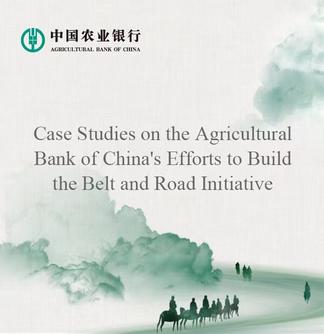BEIJING, Jan. 16 (Xinhua) -- China's winter tourism market has gained fresh momentum with the approaching Spring Festival, gearing up to provide more culture-related activities, innovative products and diverse choices.
The ice and snow season has seen Harbin, capital of northeast China's Heilongjiang Province, wow the tourists again with a fresh look. Adding to traditional ice and snow sculptures, the city introduced lantern and lighting exhibition on Central Street, its landmark pedestrian area, together with other cultural and sport activities.
But winter could be more than ice and snow. Some Chinese provinces and cities which enjoy warmer climate, for instance, are providing other choices such as urban exploration and hot springs, enriching the winter tourism market while driving relevant spending.
-- Rising popularity of ice and snow tourism

Tourists take photos at a snow sculpture near the Harbin Ice-Snow World in Harbin, northeast China's Heilongjiang Province, Jan. 5, 2025. (Xinhua/Wang Jianwei)
Harbin in recent years has emerged as one of the top winter travel destinations in China, attracting visitors from around the globe.
The Harbin Ice-Snow World, the city's iconic landmark, has welcomed more than 1 million visitors as of Jan. 9, just 20 days since it opened on Dec. 21, 2024.
The park this year features design inspired by the upcoming 2025 Harbin Asian Winter Games, and boasts an area of 1 million square meters, the largest in its history, using more than 300,000 cubic meters of ice and snow for construction.
In addition to expanding entertainment options, the city also improved tourist services such as setting up stay-warm gear rental stores at the airport and providing locker services in 22 key subway stations.
In fact, not only Harbin, the entire province of Heilongjiang is making efforts to enhance its competitiveness for winter tourism. The province is acting to further improve travel products, tourist catering and accommodation, among other areas, to provide tourists with better travel experience and more unique emotional value, according to the Department of Culture and Tourism of Heilongjiang.
The next-door Jilin Province is also on the move. The province offers unique experiences of powder snow, quiet wind, rime and hot springs together with local culture and folk customs to inject more vitality into its ice and snow economy.
-- Continuous innovation of products
A report released by China Tourism Academy (CTA) shows increasing enthusiasm in experiencing ice and snow tourism. 71.2 percent surveyed tourists expressed their desire to experience ice and snow activities during the 2024-2025 winter season, the highest percentage in recent years' surveys. In the meantime, 53.4 percent of tourists indicated that they would increase the frequency of their ice and snow-related travel. Research team of the CTA calculates roughly 430 million ice and snow tourists in China during the 2023-2024 ice and snow season, an increase of 38 percent on year. The industry generated revenue of 524.7 billion yuan during the period, an increase of 60 percent year on year. It is estimated that the number of ice and snow tourists in China during the 2024-2025 ice and snow season could reach 520 million, with relevant revenue projected to exceed 630 billion yuan.
Massive market demand, policy support, and high-quality product offerings have collectively accelerated the transformation of China's ice and snow tourism towards popularization, quality-oriented development and digitalization, according to Han Yuanjun, a researcher with CTA.
China's traditional ice and snow culture featuring fur skis, ice frolicking, ice lanterns, and ice carving has bursted with new vitality through modern development, and modern ice and snow cultural products such as ice and snow health care, snow train, and ice and snow concerts are highly sought after by tourists, according to Han.
New technology applications such as digital technology, intelligent ice and snow equipment, and new materials are fueling the transformation of the ice and snow industry as well. The applying of art and tech has given relevant products a stronger sense of fashion and modernity which are more favored by young people, according to Han, adding that such innovations are constantly pushing forward industry upgrades.
-- More diverse travel options

An aerial drone photo taken on July 23, 2024 shows tourists taking yachts in Sanya, south China's Hainan Province. (Xinhua/Pu Xiaoxu)
Ice and snow experience is far from the whole story of travelling in winter. For those who prefer escaping from the cold, provinces and cities flashing the "warm card" hold more appeal.
Southeast China's Fujian Province, for example, has been carrying out various cultural tourism activities and launching a series of incentives to attract tourists to come and enjoy its warm winter. South China's tropical island province of Hainan, launched 50 boutique routes covering such themes as urban exploration, natural scenery, travel with kids, health and wellness, cultural experience, to enrich options for those who travel like "migratory birds".
Rural tourism, in the meantime, has also become a trendy option in recent years especially among urban dwellers.
It is noted that seven more villages in China have been honored as Best Tourism Villages by the United Nations World Tourism Organization (UN Tourism) in its 2024 selection announced last November. This brings the total number of Chinese villages recognized as Best Tourism Villages to 15, making China the country with the highest number of villages holding this title.
Beautiful villages hold rich tourism resources, unique folk customs and cultural activities, providing tourists with a whole package of leisure and cultural experiences, experts say, citing that examples of living in sea grass house and watching elegant swans in Shandong Yandunjiao Village and making celadon ware in Zhejiang Xitou Village to wish good luck for the new year hold irresistible charm towards those who seek rural sojourns.
Festival travel is also an important part of winter tourism in China. Traditional festivals hold rich cultural connotations and relevant winter travel product could fully integrate cultural heritage and modern development in design, experts say. (Edited by Niu Huizhe with Xinhua Silk Road, niuhuizhe@xinhua.org)




 A single purchase
A single purchase









